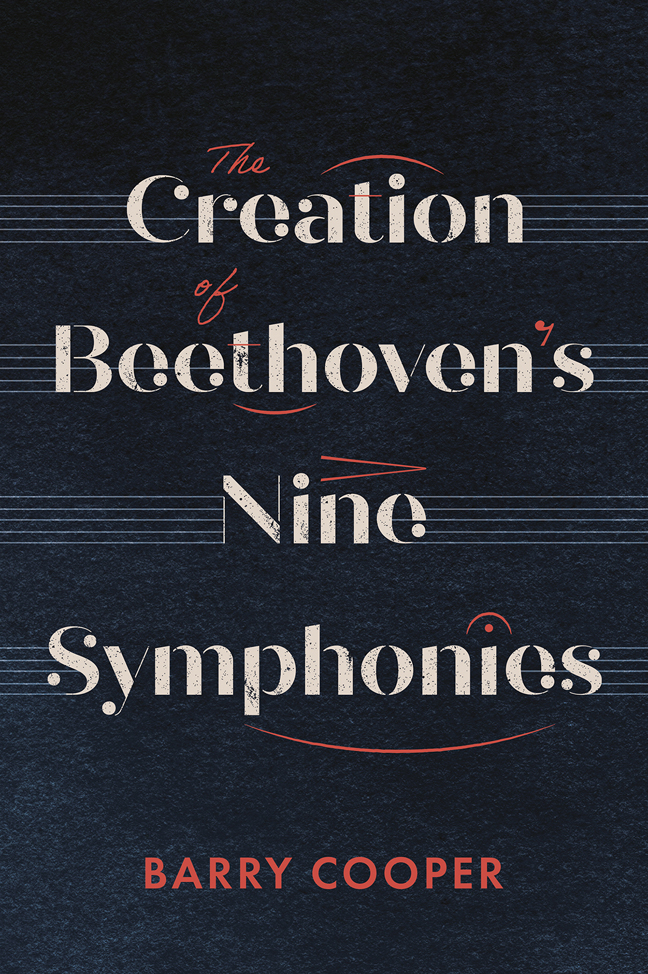Book contents
- Frontmatter
- Contents
- List of music examples
- List of tables and figures
- Preface and acknowledgements
- Abbreviations
- Introduction
- 1 The Long and Hazardous Road to the First Symphony, Op. 21
- 2 A Creation in Two Parts: The Second Symphony, Op. 36
- 3 Elevating the Genre: The Third Symphony (Eroica), Op. 55
- 4 The Oppersdorff Connection: The Fourth Symphony, Op. 60
- 5 Motivic Intensity: The Fifth Symphony, Op. 67
- 6 ‘More an Expression of Feeling than Painting’: The Sixth Symphony (Pastoral), Op. 68
- 7 ‘Great, Exalted’ Work: The Seventh Symphony, Op. 92
- 8 ‘Just Because it is Much Better’: The Eighth Symphony, Op. 93
- 9 The Philharmonic Connection: The Ninth Symphony, Op. 125
- 10 Epilogue
- Bibliography
- Index of Music Manuscripts
- Index of Beethoven’s Works
- General Index
6 - ‘More an Expression of Feeling than Painting’: The Sixth Symphony (Pastoral), Op. 68
Published online by Cambridge University Press: 02 March 2024
- Frontmatter
- Contents
- List of music examples
- List of tables and figures
- Preface and acknowledgements
- Abbreviations
- Introduction
- 1 The Long and Hazardous Road to the First Symphony, Op. 21
- 2 A Creation in Two Parts: The Second Symphony, Op. 36
- 3 Elevating the Genre: The Third Symphony (Eroica), Op. 55
- 4 The Oppersdorff Connection: The Fourth Symphony, Op. 60
- 5 Motivic Intensity: The Fifth Symphony, Op. 67
- 6 ‘More an Expression of Feeling than Painting’: The Sixth Symphony (Pastoral), Op. 68
- 7 ‘Great, Exalted’ Work: The Seventh Symphony, Op. 92
- 8 ‘Just Because it is Much Better’: The Eighth Symphony, Op. 93
- 9 The Philharmonic Connection: The Ninth Symphony, Op. 125
- 10 Epilogue
- Bibliography
- Index of Music Manuscripts
- Index of Beethoven’s Works
- General Index
Summary
Allegro ma non troppo: Angenehme, heitre Empfindungen, welche bey der Ankunft auf dem Lande im Menschen erwachen (Pleasant, cheerful feelings which awaken in one on arrival in the countryside)
Andante molto moto: Scene am Bach (Scene by the brook)
Allegro: Lustiges Zusammenseyn der Landleute (Merry gathering of country people) –
Allegro: Donner. Sturm (Thunder. Storm) –
Allegretto: Hirtengesang: Wohlthätige, mit Dank an die Gottheit verbundene Gefühle nach dem Sturm (Shepherds’ song: glad feelings combined with thanks to the Godhead after the storm)
A characteristic symphony
Beethoven’s Sixth Symphony differs from all his others in having explicit poetic reference in every movement, in a genre known as the ‘characteristic symphony’, and with the overall title Pastoral-Sinfonie, given in French or Italian in some of the sources as ‘Sinfonie pastorale’ or ‘Sinfonia pastorale’. The term ‘characteristic’ in this sense denotes a work or movement in which a single explicitly named character or emotion prevails throughout, and it was defined as such in various writings of the period. It differs from a ‘programme symphony’ in that it has no narrative, although both genres rely on poetic content for an understanding of their meaning.
Beethoven’s only previous characteristic work was his Sonate pathétique, and his only previous use of the concept in a symphony was the ‘Marcia funebre’ in the Eroica. One might argue that the Eroica as a whole was a characteristic work, but Beethoven did not describe it as such, and it must be remembered that the work did not initially bear this title, which was added only when it was being published. Haydn and Mozart, too, had not composed explicitly characteristic symphonies apart from a few with rather general titles such as Le matin and La chasse (Haydn’s symphonies Nos. 6 and 73), and the pastoral elements in the present symphony owe little to the symphonies of either composer, though Haydn’s oratorio The Seasons was surely influential. Characteristic symphonies by other Viennese composers were written in the 1790s, however, including two by Anton Wranitzky (Aphrodite and a birthday symphony) and three by his brother Paul (Joy of the Hungarian Nation, Symphony for the Peace and a wedding symphony). Beethoven knew both brothers, and probably encountered at least some of their characteristic symphonies.
In choosing the pastoral idiom for his Sixth Symphony, Beethoven was following a long tradition of pastoral music.
- Type
- Chapter
- Information
- The Creation of Beethoven's Nine Symphonies , pp. 142 - 170Publisher: Boydell & BrewerPrint publication year: 2024

